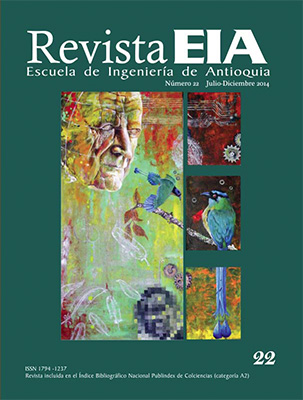DISEÑO DE UN MICROSISTEMA PROGRAMABLE PARA EFECTOS DE AUDIO DIGITAL USANDO FPGAS
DISEÑO DE UN MICROSISTEMA PROGRAMABLE PARA EFECTOS DE AUDIO DIGITAL USANDO FPGAS


This work is licensed under a Creative Commons Attribution-NonCommercial-NoDerivatives 4.0 International License.
Copyright statement
The authors exclusively assign to the Universidad EIA, with the power to assign to third parties, all the exploitation rights that derive from the works that are accepted for publication in the Revista EIA, as well as in any product derived from it and, in in particular, those of reproduction, distribution, public communication (including interactive making available) and transformation (including adaptation, modification and, where appropriate, translation), for all types of exploitation (by way of example and not limitation : in paper, electronic, online, computer or audiovisual format, as well as in any other format, even for promotional or advertising purposes and / or for the production of derivative products), for a worldwide territorial scope and for the entire duration of the rights provided for in the current published text of the Intellectual Property Law. This assignment will be made by the authors without the right to any type of remuneration or compensation.
Consequently, the author may not publish or disseminate the works that are selected for publication in the Revista EIA, neither totally nor partially, nor authorize their publication to third parties, without the prior express authorization, requested and granted in writing, from the Univeridad EIA.
Show authors biography
RESUMEN
Este artículo describe el diseño de un microsistema programable para el procesamiento de efectos de audio digital implementado en un FPGA. El microsistema es diseñado usando un procesador de propósito específico y reconfigurable, un banco de RAMs y una interfaz gráfica de usuario basada en una pantalla táctil LCD. El procesador es diseñado usando 15 efectos de audio basados en retardos y procesamiento en el dominio dinámico y de la frecuencia. Los efectos son diseñados usando Megafunciones y el compilador FIR de Quartus II, son simulados en Simulink5 usando DSP Builder6, y son configurados utilizando una interfaz gráfica de usuario. El microsistema programable es implementado en el sistema de desarrollo DE2-70, y su funcionamiento es verificado usando un reproductor MP3 y un parlante. Adicionalmente, el microsistema permite la generación de efectos con alta fidelidad usando una tasa de muestreo máxima de 195.62 MSPS, y puede ser embebido en un SoC.
ABSTRACT
This paper describes the design of a programmable microsystem for processing of digital audio effects implemented in an FPGA. The microsystem is designed using an specific purpose and reconfigurable processor, a bank of RAMs and a user graphic interface based on an LCD touch panel. The processor is designed using 15 audio effects based on delays, and dynamic and frequency domain processing. The effects are designed using Megafunctions and the FIR compiler of Quartus II, simulated in Simulink using DSP Builder, and configured using a user graphic interface. The programmable microsystem is implemented on the DE2-70 development board, and its operation is verified using an MP3 player and a speaker. Additionally, the microsystem allows the generation of effects with high fidelity using a maximum sample rate of 195.62 MSPS, and can be embedded into a SoC.
Article visits 256 | PDF visits 129
